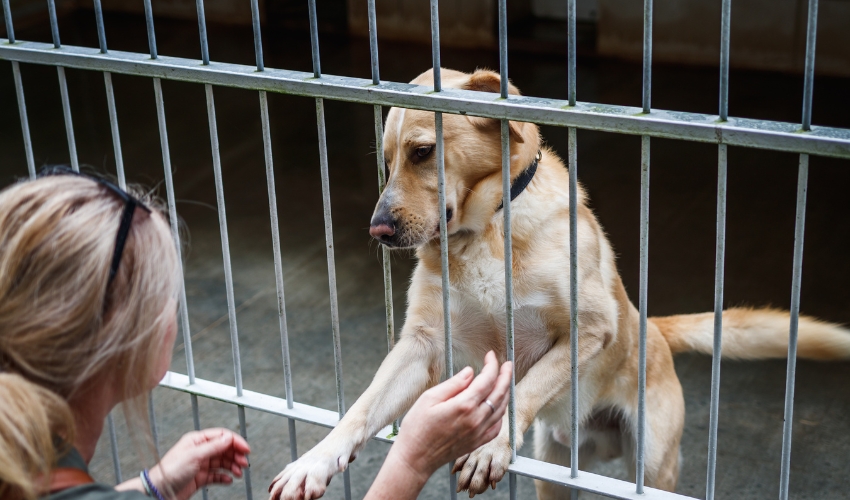Caring for a Dog with Neurological Distemper
 Canine Distemper is a serious, highly contagious viral disease in dogs. It has three phases of infection that affect three different areas in the body, namely the respiratory system, gastrointestinal system, and nervous system. That’s why symptoms can range from mild fever, vomiting, and diarrhea to severe tremors, seizures, and even paralysis. Since Distemper currently has no specific cure, it’s crucial for infected dogs to receive supportive care as soon as possible.
Canine Distemper is a serious, highly contagious viral disease in dogs. It has three phases of infection that affect three different areas in the body, namely the respiratory system, gastrointestinal system, and nervous system. That’s why symptoms can range from mild fever, vomiting, and diarrhea to severe tremors, seizures, and even paralysis. Since Distemper currently has no specific cure, it’s crucial for infected dogs to receive supportive care as soon as possible.
Supportive care generally includes IV fluids, electrolytes, antibiotics, and anti-nausea medications, but once the virus reaches the nervous system, your dog will start experiencing neurological symptoms, like head tilts and muscle tics. When this happens your veterinarian may add a few things to the treatment regimen. Caring for a dog with neurological Distemper is a bit different than doing so for a pup that has gastrointestinal symptoms, especially when they start having seizure episodes.
Different Types of Seizure Episodes
According to Marvistavet.com, there are three different seizures in dogs: focal or partial motor seizures, generalized or grand mal seizures, and psychomotor or complex partial seizures.
Partial motor seizures
Partial seizures happen when a small area in the nerve cells send incorrect signals to the brain, causing short, involuntary movements. Most of the time, your dog will be conscious while this happens.
Examples of partial seizures include the “chewing gum” fit, which is very common in dogs with neurological Distemper, muscle tics, jerks, or spams, and turning of the head or body to one side.
Generalized seizures
Unlike partial seizures, generalized seizures affect the whole body. This is because, in a generalized seizure, both sides of the brain are receiving incorrect signals from the nerve cells, causing the entire body to move involuntarily. It typically lasts about 10 to 90 seconds and your dog will most likely be unconscious throughout the fit.
During a generalized seizure, dogs usually lose consciousness and fall to the ground with their limbs extended and stiff. After that, they may also paddle their feet, grind their teeth, and defecate or urinate involuntarily.
Complex partial seizures
Complex partial seizures are a bit different from partial and generalized seizures. Unlike the two, these seizures display themselves as behavioral changes rather than involuntary jerking movements or stiffening of the limbs. During a complex partial seizure, your dog may suddenly become fearful, distressed, aggressive, disoriented, or act like they don’t know you or other members of the family. These abnormal behaviors can last for minutes to hours, followed by a generalized seizure.
Depending on how much damage the Distemper virus has caused to your dog’s nervous system, they can experience either of these seizures.
What to Do When Your Dog Starts Seizing
 Seeing your dog seizing, especially for the first time, can be pretty scary. However, during these situations, it’s best to stay calm. Look at your dog’s surroundings and remove any object that could potentially hurt them. If they’re under a low table or a chair, prevent them from hitting their head by gently sliding them away—when doing this, don’t place your hands anywhere near your dog’s mouth because they can accidentally bite you.
Seeing your dog seizing, especially for the first time, can be pretty scary. However, during these situations, it’s best to stay calm. Look at your dog’s surroundings and remove any object that could potentially hurt them. If they’re under a low table or a chair, prevent them from hitting their head by gently sliding them away—when doing this, don’t place your hands anywhere near your dog’s mouth because they can accidentally bite you.
When your dog is secured and in a safe location, refrain from holding their head or putting anything in their mouth (they could choke). If the episode goes on for a couple of minutes, your dog’s temperature will start rising. Point a fan towards them and carefully rub ice cubes on their paws to keep them from overheating. Once the seizure stops, take your dog to the vet immediately.
Remember to take note of how long the episode was (to be more accurate, you can time it) and your dog’s actions during the episode. This will help your veterinarian recognize the type of seizure your dog exhibited and figure out the right anti-seizure medication to use. The two most common include, phenobarbital and potassium bromide.











